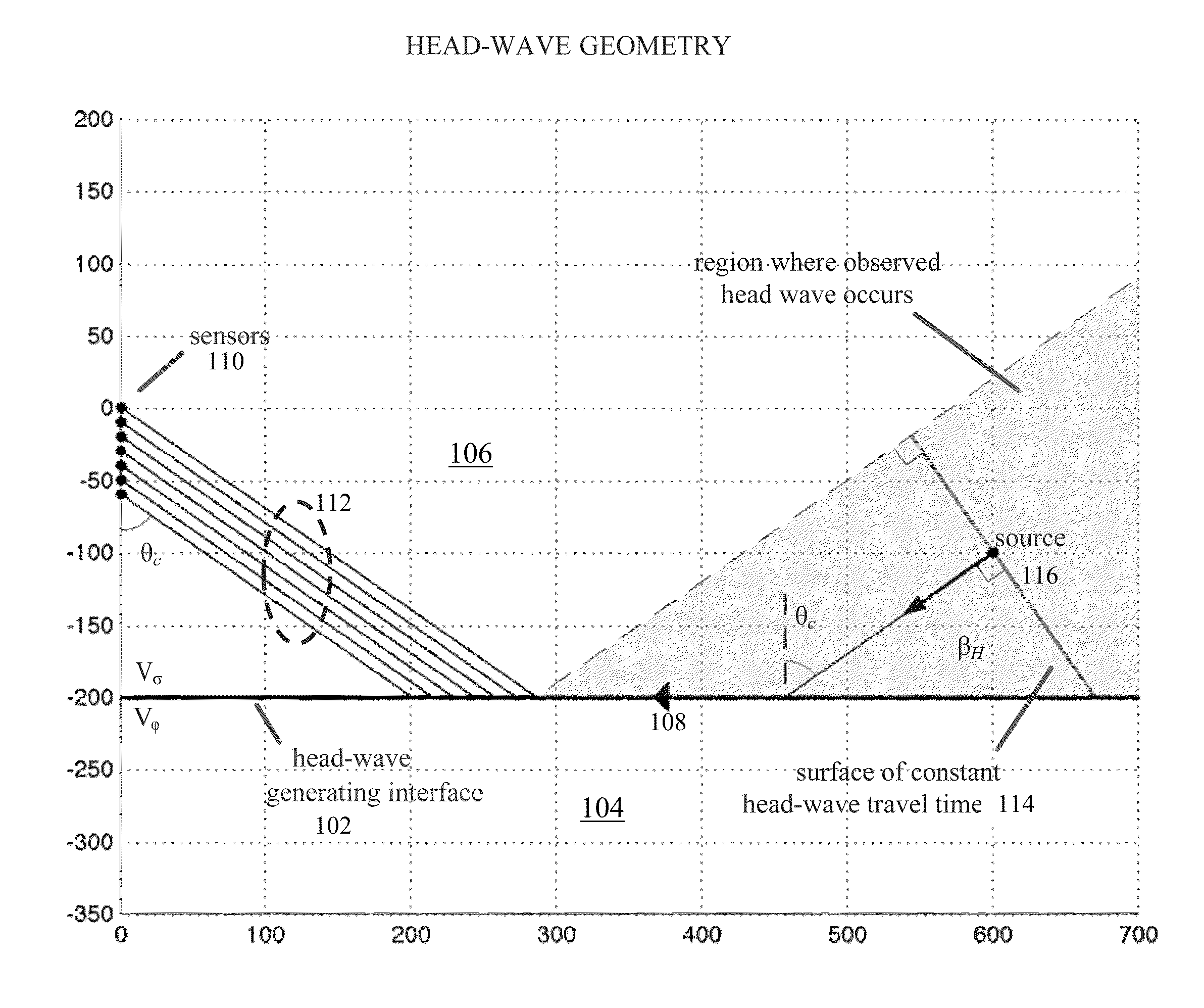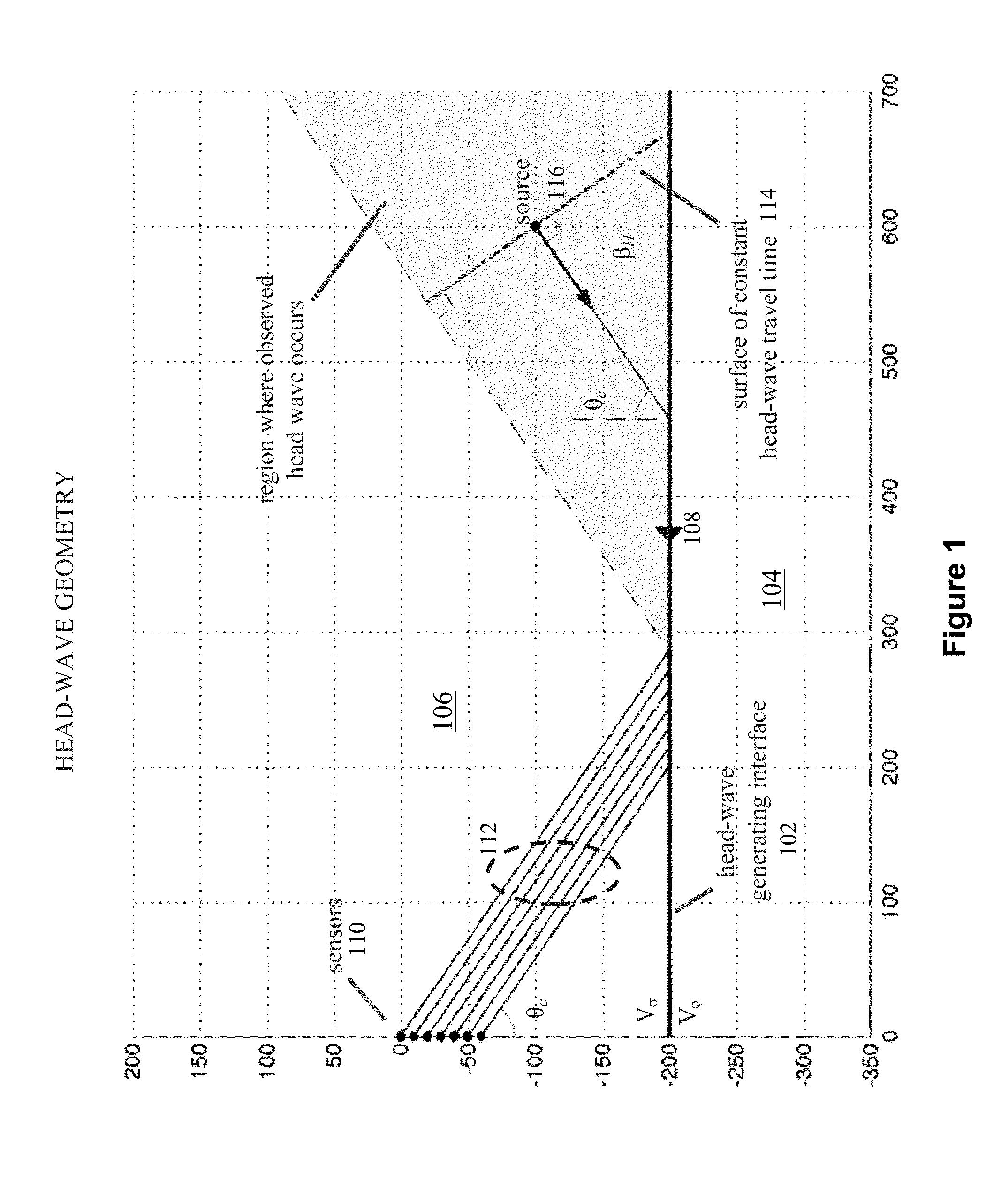Microseismic event localization using both direct-path and head-wave arrivals
- Summary
- Abstract
- Description
- Claims
- Application Information
AI Technical Summary
Benefits of technology
Problems solved by technology
Method used
Image
Examples
examples
[0058]The above described multipath-analysis microseismic localization technique was applied to a data set collected during hydraulic fracture stimulation of the Montney formation in Alberta. The Montney is bounded below by the higher-velocity Belloy formation. A slightly deviated array of 12 3C geophones was used to monitor the stimulation from near the top of the Montney formation, spanning a vertical height of approximately 100 meters, 200 to 300 meters above the Belloy interface. This configuration resulted in clear head-wave arrivals being observed in collected event data for a wide range of event locations, with the majority of high-energy activity occurring at horizontal displacements of 600 to 1000 meters.
[0059]This survey was first processed using industry standard techniques without accounting for head waves from the deeper fast layer associated with the Belloy formation. As described above in connection with FIG. 9, these microseismic analysis results show events spanning...
PUM
 Login to View More
Login to View More Abstract
Description
Claims
Application Information
 Login to View More
Login to View More - R&D
- Intellectual Property
- Life Sciences
- Materials
- Tech Scout
- Unparalleled Data Quality
- Higher Quality Content
- 60% Fewer Hallucinations
Browse by: Latest US Patents, China's latest patents, Technical Efficacy Thesaurus, Application Domain, Technology Topic, Popular Technical Reports.
© 2025 PatSnap. All rights reserved.Legal|Privacy policy|Modern Slavery Act Transparency Statement|Sitemap|About US| Contact US: help@patsnap.com



